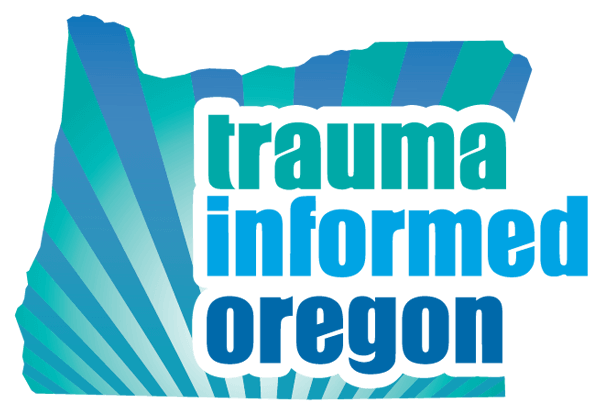Adverse Childhood Experiences—ACEs
 What is the Background of ACEs?
What is the Background of ACEs?
The original Adverse Childhood Experiences (ACE) Study was conducted at Kaiser Permanente in collaboration with the Centers for Disease Control and Prevention from 1995 to 1997. Over 17,000 Kaiser members receiving physical exams completed confidential surveys regarding their experience of childhood abuse, neglect, household challenges, and later-life health and well-being. The types of ACEs studied were neglect (emotional and physical), abuse (emotional, physical, and sexual), and household challenges including domestic violence, substance abuse, mental illness, separation/divorce, and incarcerated household members.
The participants of the Kaiser ACE study were 74.8% white, 46.4% over age 60, and 35.9% had completed some college, with another 39.3% being college graduates or higher. Recognizing the need for a more diverse range of experiences to be acknowledged, the RYSE (Rising Youth for Social Equity) Center has built on the original ACE pyramid to include experiences of historical trauma, implicit bias, and the impact of adverse social conditions.
 Are ACEs Common?
Are ACEs Common?
More than 1/2 of the general population has been shown to experience at least one ACE, over 1/4 experience 2 or more ACEs, and 1/8 experience 4 or more ACEs.
Socioeconomic status
- Children who lived below the Federal Poverty Line in 2011 were found to be 5 times more likely to experience 4 or more ACEs than those who lived in financially stable households.
- Housing insecurity places children at risk of ACE exposure. Youth and families experiencing housing insecurity report instances of physical and emotional abuse, financial exploitation, and sex-trafficking while staying in shelters, on the streets, and “doubled-up” (multiple families living within one home).
Race and ethnicity
- American Indian and Alaska Native youth were found to be 2 times as likely to have experienced 2-3 ACEs and 3 times as likely to have experienced 4-5 ACEs compared to non-Hispanic white children.
- 11% of Hispanic youth, 17 % of non-Hispanic black youth, and 10% of non-Hispanic white youth were found to have had 3 or more adverse experiences.
Ability
- Persons with disabilities were more likely (36.5%) than those without disabilities (19.6%) to report high ACE exposure.
Sexual orientation and gender identity
- LGB individuals reported twice as much physical, emotion, and sexual abuse as heterosexual peers.
- 51% of transgender individuals were found to experience 4 or more ACEs, compared to 12.6% heterosexual and 30.5% LGB adults.
Military service
- Military service members and veterans with voluntary military enrollment had 2 times the odds of reporting childhood sexual abuse compared with peers without military service.
 What Are Some of the Impacts of ACEs?
What Are Some of the Impacts of ACEs?
- Children with high ACE scores are more likely to experience anxiety and depression, developmental delays, cognitive and socioemotional health issues, academic challenges, and specialized health needs.
Financial wellness
- ACEs increase the likelihood of high school non-completion, not having a college degree, being unemployed as an adult, living below the poverty line, and experiencing homelessness.
Adult physical health
- Adults in Oregon with 4 or more ACEs were found to be 2 times as likely to have fair or poor general health compared to adults with 0 ACEs.
Intimate partner violence
- Women who experienced or witnessed violence as children were found to be 3.5 times as likely to become victims of violence as adults.
- Men with a childhood history of violence or who witnessed their mothers being abused by an intimate partner were 3.3 times as likely as men without this experience to become a perpetrator of intimate partner violence as adults.
Adult substance use
- Adults with 5 or more ACEs were 2.6 times more likely to be a current smoker than adults with no ACEs .
- Individuals with 3 ACEs were 4 times as likely as individuals with 0 ACEs to have initiated drug use at age 14 or younger.
- 2% LGB individuals compared to 19.7% heterosexual individuals were found to be current smokers.
- Rates among Native American and Alaska Native children with 3+ ACEs were higher than their Native American and Alaska Native peers who had fewer than 2 ACEs for depression, anxiety and ADHD.
Adult mental health
- Adults in Oregon with 4 or more ACEs were 3.5x more likely to have depression compared to adults with no ACEs.
- The odds of seriously considering suicide or attempting suicide in adulthood increased more than threefold among those with 3 or more ACEs compared with those with no ACEs.
- 6% LGB compared to 17.0% heterosexual individuals experienced a depressive disorder.
 Sources
Sources
- Centers for Disease Control and Prevention. About the CDC-Kaiser ACE Study. (2019).
- Stevens, J. (2015). ACEs Connection.
- The health and behavioral health consequences of childhood trauma fact sheet. National Health Care for the Homeless Council. (2019)
- Child Trends. Adverse Childhood Experiences. (2019).
- Kenney, M.K., Singh, G. (2016).
- Austin, A., Herrick, H., Proescholdbell, S., Simmons, J. (2016).
- Andersen, J.P., Blosnich, J. (2013).
- Schnarrs, P. W., Stone, A. L., Salcido, R. Jr., Baldwin, A., Nemeroff, C. B. (2019).
- Blosnich, J.R., Ditcher, M.E., Cerulli, C. (2014).
- Oregon Health Authority. 2015 – 2017 Behavioral Risk Factor Surveillance System
- Whitfield, C.L., Anda, R.F., Dube, S.R., Felitti, V.J. (2003).
- Ford, E.S., Anda, R.F., Edwards, V.J., Perry, G.S., Zhao, G., Croft, J.B. (2011).
- Thompson, M.P., Kingree, J.B., Lamis, D. (2019).
Written and compiled by Trauma Informed Oregon Interns Rebecca Saunders and Sky Lockhart.

